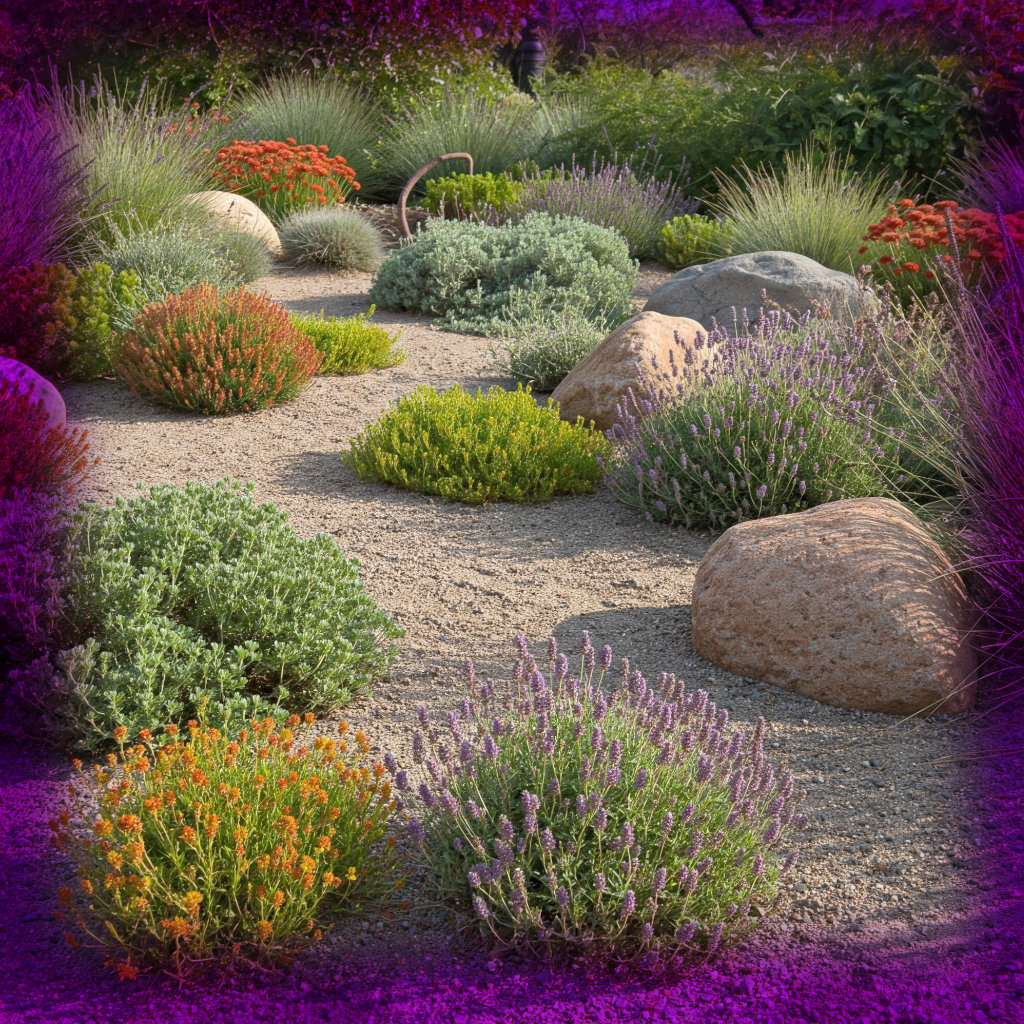Introduction: The New Era of Sustainable Landscaping
Xeriscaping’s Global Revolution
Once considered merely a practical solution for drought-stricken regions, xeriscaping has blossomed into a sophisticated landscaping philosophy embraced from Melbourne to Marrakech. This paradigm shift represents more than water conservation—it’s a complete reimagining of outdoor spaces that harmonizes ecological responsibility with breathtaking aesthetics. Modern xeriscapes now grace the grounds of luxury resorts, corporate campuses, and even royal gardens, proving sustainability and beauty aren’t mutually exclusive.
The Hallmarks of Award-Worthy Xeriscapes
What separates an ordinary dry garden from those that win international accolades? Competition judges evaluate multiple dimensions:
- Hydrological Innovation – Cutting-edge water capture and distribution systems
- Biophilic Design – Seamless integration with natural ecosystems
- Four-Season Interest – Strategic plant selection for year-round appeal
- Artistic Composition – Masterful use of color, texture, and form
- Ecological Impact – Measurable benefits to local biodiversity
Recent gold medal winners at the Chelsea Flower Show have featured astonishing innovations like fog-harvesting plant systems and “living fossil” gardens showcasing prehistoric drought-tolerant species.
The Multifaceted Benefits of Xeriscaping
Beyond the obvious water savings (typically 50-75% reduction), these landscapes offer:
- Economic Advantages – Reduced maintenance costs and increased property values (up to 15% in arid regions)
- Ecological Benefits – Creation of pollinator highways and urban wildlife corridors
- Microclimate Regulation – Surface temperature reductions of 5-10°F compared to traditional lawns
- Resilience – Better adaptation to climate fluctuations and water restrictions
- Wellbeing – Therapeutic gardens using fragrant, drought-resistant herbs like lavender and rosemary
Core Principles of Exceptional Xeriscaping
The Seven Pillars of Success
- Comprehensive Planning – Start with detailed solar mapping and soil analysis
- Soil Revolution – Transform dirt into living ecosystems with mycorrhizal inoculants
- Precision Hydration – Implement smart irrigation with soil moisture sensors
- Plant Intelligence – Curate species based on phytosociology (natural plant communities)
- Mulch Mastery – Utilize hygroscopic materials like ramial wood chips
- Turf Transformation – Replace grass with flowering meadows or mineral gardens
- Cyclical Maintenance – Adopt regenerative pruning techniques
The Right Plant, Right Place Doctrine
This principle extends far beyond basic sun/shade considerations. Award-winning designers analyze:
- Phytogeography – A plant’s evolutionary adaptation to specific conditions
- Allelopathy – Chemical compatibility between neighboring species
- Phenology – Bloom times and seasonal interest sequencing
- Root Architecture – Deep taproots vs. fibrous mats for soil stabilization
For example, pairing silver-leaved Artemisia with purple-flowered Salvia creates not just visual contrast but a beneficial root zone partnership where the Artemisia’s deep roots bring up nutrients that benefit the shallower Salvia.
Soil Alchemy: Creating the Perfect Foundation
The most overlooked aspect of xeriscaping is soil preparation. Conduct these essential tests:
- Percolation Test – Measures drainage capacity (ideal is 1-2 inches per hour)
- Slake Test – Evaluates soil structure stability
- Worm Census – Assesses biological activity (aim for 10+ earthworms per cubic foot)
Amendments should be site-specific:
- Clay Soils – Incorporate biochar and gypsum
- Sandy Soils – Add bentonite clay and fungal-dominated compost
- Alkaline Soils – Apply elemental sulfur and pine needle mulch
Designing for Distinction
Compositional Mastery
Award-winning xeriscapes employ professional design techniques:
- Repetition and Rhythm – Using drifts of the same plant in odd-numbered groupings
- Focal Points – Strategic placement of specimen plants like sculptural yuccas
- Sight Lines – Creating visual corridors that draw the eye through the landscape
- Negative Space – Incorporating “breathing room” with gravel or bare soil areas
Hardscaping with Purpose
Integrate these water-smart features:
- Permeable Paving – Resin-bound gravel or open-cell pavers
- Dry Stream Beds – Functional drainage disguised as natural features
- Gabion Walls – Stone-filled cages that provide thermal mass
- Terraces – Contoured to maximize water retention
Creating Year-Round Drama
Seasonal interest is achieved through:
- Winter – Evergreen shrubs with interesting bark (Manzanita, Creosote)
- Spring – Bulbs adapted to dry conditions (Ipheion, Allium)
- Summer – Heat-loving bloomers (Texas Sage, Blanket Flower)
- Fall – Grasses with spectacular seed heads (Muhly, Feather Reed)
Plant Selection Secrets of the Pros
Drought-Tolerant Superstars
Beyond the usual suspects (succulents, lavender), consider:
- Living Fossils – Wollemi Pine, Ginkgo biloba
- Medicinal Plants – Mormon Tea (Ephedra), Yerba Santa
- Edible Varieties – Olives, Pomegranates, Pineapple Guava
Native vs. Adapted Species
While natives are ideal, some adapted plants offer unique advantages:
- South African – Proteas, Red Hot Pokers
- Australian – Bottlebrush, Grevillea
- Mediterranean – Olive Trees, Rosemary
The Understory Layer
Often neglected but crucial for microclimate creation:
- Groundcovers – Dymondia, Kurapia
- Living Mulches – Thyme, Chamomile
- Bulbs – Rain Lilies, Society Garlic
Water Wisdom: Beyond Basic Irrigation
Smart System Essentials
Components of championship-caliber irrigation:
- Soil Moisture Sensors – Prevent overwatering
- Pressure Regulation – Ensures even distribution
- Zone Separation – Groups plants by water needs
- Flow Monitoring – Detects leaks immediately
Alternative Water Sources
Innovative water harvesting techniques:
- Fog Nets – Collect atmospheric moisture
- Air Wells – Condensation harvesting structures
- Graywater Systems – Laundry-to-landscape setups
- Swales – Contoured water-capture channels
Conclusion: Your Path to Xeriscaping Excellence
Creating an award-worthy xeriscape requires equal parts science and artistry. By embracing these advanced techniques—from soil mycorrhization to phytogeographic planting schemes—you’ll craft a landscape that’s not just water-efficient, but truly extraordinary. Remember that the most celebrated xeriscapes evolve over several seasons as plants establish and ecological relationships develop.
Begin your transformation today by:
- Conducting a thorough site analysis
- Developing a phased implementation plan
- Connecting with local native plant societies
- Documenting your progress for potential competitions
The future of landscaping belongs to those who can marry sustainability with stunning design. Your xeriscape masterpiece awaits—one that might just earn its own accolades while helping heal our planet.

